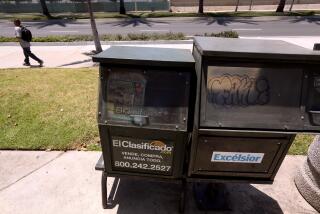COMMERCE : Nonprofits Learn About Media Access
- Share via
In the Los Angeles area, where English and Spanish speakers can choose from about 75 newspapers, 55 radio outlets and 20 television stations, nonprofit organizations often find dealing with the media a trying task.
Poorly funded and understaffed, many nonprofit agencies seeking publicity are bewildered by the hidden hierarchies within news organizations. Whether composing a news release or determining what makes an event newsworthy, nonprofit groups with little knowledge of the media are often left in the cold when it comes to publicizing their events.
For those reasons, the Mexican American Opportunity Foundation last week showed nonprofit groups how to get their message to the public through better media relations. Public affairs directors from print, visual and radio media provided tips to about 75 representatives from area organizations at the seminar.
“Learn how to prioritize your events,” said Teresa Samaniego, public affairs director for KABC-TV Channel 7.
Samaniego discussed the value of networking, pointing out that organizations that nurture friendly relationships with the media have better opportunities of gaining access to a forum for their views.
Other advice came in the way of a sound bite: “We in the media are ditchdiggers with a pencil, so help us out,” said Ray Gonzalez of KTLA-TV Channel 11, referring to the numerous news releases each media organization catalogues.
“If you’re the PR person for your organization, be very realistic and ask yourself: ‘Would I watch this on the news?’ ”
Judy Rambeau, the public information officer for the City of Commerce, provided guidelines for determining what makes news. Newsworthy stories, she said, should contain several of these aspects: proximity, prominence, conflict, uniqueness, human interest, change, timeliness and clarity.
The foundation’s organizers said they coordinated the seminar because they saw themselves in need of such guidance in trying to publicize their events. Founded in 1962, the foundation offers bilingual assistance programs including child care, job training, and emergency food and clothing provisions to families with dependent children.
More to Read
Sign up for Essential California
The most important California stories and recommendations in your inbox every morning.
You may occasionally receive promotional content from the Los Angeles Times.













